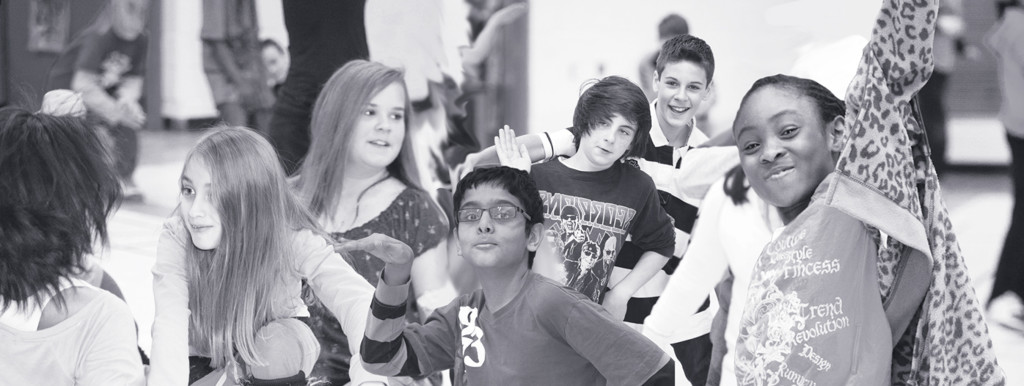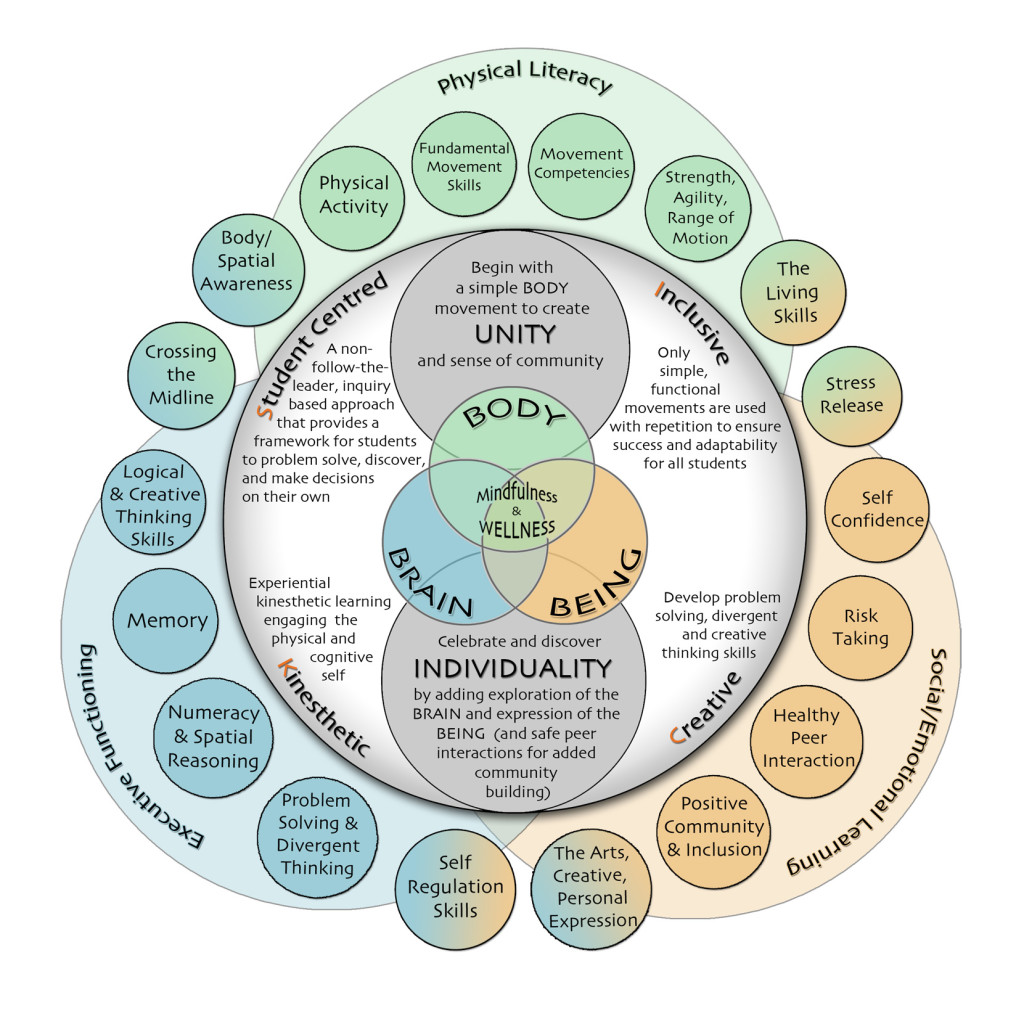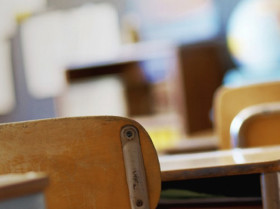Note from Dr. Amanda Stanec
I grew up highland dancing and credit many things in my life to my experiences in dance. While not the more commonly known ballet, tap, modern, jazz, or hip-hop - I learned coordination, strength, balance, resilience, and technique, all while wearing a very heavy kilt. These skills transferred to sport as well as to lifetime activities that I currently enjoy. Yet, as I travel to many school districts throughout the US and Canada the theme of not teaching dance always emerges. Despite the fact that it exists in all curriculum, it is normal for the majority of teachers to ignore teaching it. I am always blown away by this. What if a math teacher simply ignored teaching fractions? It wouldn't fly - and it shouldn't fly in the physical education profession either.
It's not just the teachers ignoring the teaching of dance that I observe. For example, my own partner (MacGyver) didn't feel confident in dancing at functions and I was left to dance with uncles at family weddings or watch others dance and have a great time. I wondered why no one taught him to dance in PE while he was growing up? Clearly he has the coordination as played multiple sports at a very high level through high school. How many other adults are missing out on so much fun because they don't know how to dance? What if the physical education profession lets down another generation?
Rather than feel frustrated, I have decided to do my small part to help these teachers. It's clear to me that they don't feel confident in teaching dance. Thus, I present to you the first post in a blog series that aims to support teachers in teaching dance in physical education.
Guest authors are dance educators I have observed in action. They know their stuff. They know how to energize a room full of reluctant teachers and students alike, and they know that their movement category matters greatly in terms of supporting students' physical literacy journey. Our first post explores the why we should dance, who can teach dance, and provides information about a great organization called Groove EDGEucation.
Without further adieu, I present to you the first guest author Michelle Hillier of Groove EDGEucation.
Please leave a comment or question for me or Michelle in the space below so we can keep the conversation going and help all kids learn to love to dance!
---------------------------------------------------------------------------------------------------------------

WHY teach Dance in Health & Physical Education?
When it comes to children moving their bodies and being physically active, teachers often think that has to involve some form of sport, game or traditional fitness activity. What about dancing? “Dance education is a crucial component of a comprehensive education for all students. It is a movement art form that promotes learning to communicate and express ideas, feelings, perspectives, and concepts through kinesthetic modes of learning” (Cone, S. & Cone, T., 2011). Incorporating dance and movement (really, that's all dance is - movement with or without music!) as part of a quality health and physical education program has a multitude of benefits for the total health and well-being of students in and out of the classroom. Often the barrier many teachers identify as to why dance isn’t appropriate for their programming is that they don’t know where to begin in their planning, instruction, execution or assessment of this highly effective and fun way to gets kids moving!
The Benefits of Dance in a Quality Health & Physical Education Program:
1) Promotion of Physical Literacy and Activity
A study in the New England Journal of Medicine discovered that “the only physical activity to offer protection against dementia is frequent dancing. It was the greatest risk reduction of any activity studied, cognitive or physical.” (Verghese et al., 2003) I realize that the senior demographic is a far stretch away from the students that you teach, however if we can start children dancing and moving at a young age, the hope is that it will continue and be part of their daily lifestyle in the long term. We can all recognize that dancing allows the physical body to be active - whether students are doing a creative movement, line dancing, hip hop, African, Bollywood or cultural dances. Some of the physical benefits include increased heart rate, muscular strength, endurance, agility, flexibility, balance, cardiovascular as well as co-ordination and spatial awareness. Fundamental movement skills can also be explored and developed using the modality of dance; running, hopping, skipping, galloping, balancing, rolling, crawling – all done in a creative and expressive way, that IS dance. Not to mention how effectively dance is an excellent way of creating the building blocks for physical literacy – confidence, competence, AND creativity for lifelong movement. Dancing also has benefits for the cognitive, social and emotional domains of children. However, this is where the WAY in which you teach dance, as well as the strategies you implement in the classroom, are integral in creating those meaningful dance experiences. Our goal is to have children feel successful so they create positive cognitive, social and emotional connections to dance.
Teachers can, and ought to, have a positive and lasting impact on children’s perceptions of dancing well into their youth and adult life. Early in elementary school, if a negative or unpleasant experience with dance was felt or experienced, it can impact a student’s feelings about dance for life. Don’t forget the adults who feel uncomfortable dancing in front of others, or feel that they "can't" dance. Where did that idea come from? More often than not, it can be traced back to an experience they had as a child in school during a dance lesson or event. So let’s work to recognize the impact dance can have on our children, and help empower us as teachers to create (and experience for yourself!) the positive and beneficial impact of dance.
2) Kids LOVE to Dance!
Have you watched children move when you put music on? They will move without judgment or inhibition with smiles on their faces and allow their bodies to move organically. As soon as they can stand, they can dance. If you root back to the mother's womb, the heartbeat is what babies hear as their first rhythm or beat. We are born to move. This innate ability is demonstrated when you watch a group of preschool-aged children moving to music, there is pure joy in their faces. We need to maintain that natural joy and intuitive aspect of fun in dance as kids move into our classrooms and schools.
3) Cultural Connections
Dance is the oldest form of celebration in most cultures around the world. It brings people of all ages together and allows the physical body to move. “One out of five people in Canada's population is foreign-born” (Statistics Canada, 2015). Our classrooms across the country are therefore diverse and rich with culture, where dance is celebrated in many forms at home in their communities. When teachers can make cultural connections to the students they teach, it allows them to feel respected and part of the community in their classroom. Many parents of your students will have connections to their culture and these connections should be perceived as a valuable resource for your program!
4) Teamwork and Social Skills
Dance has a perfect way to bring people together whether it be through culture, celebration, performance, or just moving to music together as a “team” or unit. There is something very powerful about a group of people of any age moving together to music. Since we all move our bodies differently (and we want to encourage that in our students!), we also need to respect others in a dance experience and allow them to express themselves in their own way. This creates a sense of trust and acceptance while advancing social skills through interactions.
5) It's in Your Curriculum!
Dance-related movement expectations are present throughout most Arts or H&PE curricula. Dance allows students in health and physical education classrooms to express themselves physically and creatively while exploring rhythm, timing, and connections to music.
WHO can teach dance in H&PE?
Everyone! However, teachers don't always believe this. When teachers across Canada are asked the question, "are you including dance in your H&PE program?" and the answer is "not really”, why do you think that is the case? There is no doubt that teachers agree that children love to dance, need to dance and would benefit from dance. The barrier usually then lies with the teacher. They don't feel good about themselves teaching dance and assume they must have a dance background, know all the current moves and songs, and are able to demonstrate a choreographed dance to teach their students. This is not the case. Obviously teaching dance with little or no experience would naturally create some anxiety for teachers as they envision themselves “on stage” in front of the students and feel were responsible for memorizing dance, modeling the movements, and having the students copy and mimic them. But, what are students learning from that? The ability to copy and follow the leader? Are they being creative? Probably not. However, if the teacher could through music and movement, lead the children in an exploration of a certain theme or subject encouraging the student’s own self-expression of that movement, not only are the kids being creative and inspired, the teachers can feel confident that there is no WRONG way to lead.
How can we help?

GROOVE IT! The Groove EDGEucation has developed an innovative educational pedagogy using dance and movement as at TOOL for learning and to promote physical, cognitive, social and emotional development. It is called The Groove. Both the definition of Groove as well as words that teachers use to describe it, typically involve music, movement, rhythm, enjoyable, zone, flow or "getting into the groove". It has a positive connotation for most.

Holistic Benefits of The Groove: When we approach movement this way, the benefits include Physical Literacy development, Executive Functioning, and Social Emotional Learning. “The Groove approach addresses both body and mind for supporting children during their physical literacy journey! "Groove has done it right by tackling not just movement form, but addressing a child’s confidence and motivation to perform. For generalist and specialist teachers alike, it requires minimal preparation and does not require extensive knowledge to implement in the classroom or recreation setting.” (Dean Kriellaars, Ph.D. Department of Physical Therapy, University of Manitoba).
Interested in learning more about Groove EDGEucation as a way to professionally develop in your dance teaching? For more information on The Groove EDGEucation visit www.thegrooveedgeucation.com
About the Guest Author, Michelle Hillier, B.Ed., Dance Ed. Specialist
 Michelle is a passionate educational presenter and consultant to school boards and teacher education programs across Canada. Dance was at the heart of her childhood, always active and leading others. After completing her degree at WLU and working as a professional dancer, she was then drawn to what came the most natural to her – teaching. After years in the classroom, Michelle and her partner Amy Tepperman created The Groove EDGEucation, where they develop resources and deliver programs nationally to support teachers to “think outside the box” as they approach dance and movement. Michelle is also on faculty in the teacher education program at UOIT and at York U in their Dance AQ courses, inspiring pre-service and in-service teachers. As a presenter, she's led workshops and keynotes at major conferences such as PHE Canada, OPHEA, CODE, CIRA, OPLS (to name a few!). When Michelle isn't on the dance floor she loves fitness, traveling, and spending time with her husband Dave and her 4-year old son James.
Michelle is a passionate educational presenter and consultant to school boards and teacher education programs across Canada. Dance was at the heart of her childhood, always active and leading others. After completing her degree at WLU and working as a professional dancer, she was then drawn to what came the most natural to her – teaching. After years in the classroom, Michelle and her partner Amy Tepperman created The Groove EDGEucation, where they develop resources and deliver programs nationally to support teachers to “think outside the box” as they approach dance and movement. Michelle is also on faculty in the teacher education program at UOIT and at York U in their Dance AQ courses, inspiring pre-service and in-service teachers. As a presenter, she's led workshops and keynotes at major conferences such as PHE Canada, OPHEA, CODE, CIRA, OPLS (to name a few!). When Michelle isn't on the dance floor she loves fitness, traveling, and spending time with her husband Dave and her 4-year old son James.







Great post Amanda and Michelle! Thanks for promoting dance and how it contributes to physical literacy. This post has caused me to reflect on my own practice and that of others. Dance and rhythmic movement is something that I teach every year. I am always impressed by how engaged, creative, and active my students are. Each year I learn more about a different form of dance and try to buy a new resource. This year I purchased Lesson Plans for Creative Dance: Connecting With Literature, Arts, and Music, by Sally Carline. What other resources or trainings do you recommend?
I love the reference to cultural connections and want to learn more about the study from the NE Journal of Medicine. Mickey Hart of the Grateful Dead researched the healing benefits of rhythm and drumming for Senior Citizens in nursing homes.
I look forward to learning more about Groove EDGEucation and want to help promote the power of dance and rhythm. Keep up the great work and thanks for the inspiration!
[…] Part I: Dance in PE and Part II: Dance in PE by Amanda Stanec on behalf of Groove EDGEucation and Teaching Dance for Understanding (TDfU) will become my go to posts for implementing dance within a PE curriculum. […]
1) There are many benefits when it comes to teaching dance in PE. Some of the benefits that I thought where the most important, in the article, was the physical benefits (increased heart rate, muscular strength, endurance, agility, etc.), the physical literacy (confidence, competence and creativity) and how it helps the kids out socially. These are the three most important ones to me because these all fall in line with my teaching philosophy. We should be teaching our students how to be creative and that its okay to think or act differently. Teaching dance in PE can do that. Nobody dances the same and no one dances perfectly. That’s not the point, the point is to get them moving, having fun and be creative. Also, when you dance, it doesn’t feel like you are working out. This is just another benefit because then the students will be less reluctant to do it. Teaching dance in PE has a lot of benefits and should be taught.
2) One other benefit that I thought was important in this article was the cultural connection. You could have a whole unit on different traditional cultural dances to teach your students about different cultures and history. Some students might not get the cultural aspect they want at home, so having a way they can connect to that piece of their life just makes teaching dance that must more important. One more benefit that I saw that I liked was the teamwork and social skills aspect. When everyone is dancing at once and no one is making fun of each other, then it creates that trust; just like the article said. Having that trust and acceptance is what drives kids to be more creative and they feel more comfortable being themselves. That is why dance in PE is so important, it helps students get some energy out, they have while doing it and they get to express themselves in a different way than their other classes will.
3) I think that this is a program that I would like to try out because it seems like something that students would love and that I would love doing. I like to dance, so bringing that passion I have for dance into the classroom can make this that much more effective. The chart has mindfulness and wellness in the middle, which it should. That is two of the goals that PE and all classes try to achieve for each of their students. Sometimes the same old workouts, sports and lessons can get boring, dance helps with that. Having dance become integrated into math, English, Science and all the other subjects brings that “it” factor to your lessons. If you constantly have your students moving around and doing something, then they are going to be more awake and alert than they would be if they were sitting down and being lectured at. I would definitely want to try this out with my students.